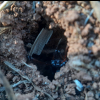I see a lot of reccomendations for Camponotus as beginner ants, but you hardly ever see colonies far along in maturity. Most issues seem to arise during/after hibernation. The species that don’t require it (desert/subtropical/tropical) seem to fair much better in general, especially long term.
The problem is that people don't provide the care camponotus specifically. From my perspective at least, a begginer species is one that doesn't have varying needs from month to month, doesn't require expensive setups, and is relatively easy to care for. For example, nurbs has had quite a few colonies reach 100+ workers, Crystal has as well, along with Serafine. There are two things camponotus REALLY need: ~3 months hibernation for MOST areas, and heat (around 85 is preferred, I believe). If you really want to go the extra mile, add parts of trees such as bark and leaves to the setups of ants that nest in those trees.
Camponotus may be a bit more difficult than say, Tetramorium, but unlike some harder ants, they have a low mortality rate, have a consistent routine/ care doesn't change much, generally accepting of food, easy to contain, and aren't explosive in growth, a good species for someone who isn't looking for the most exotic/hard to care for species, but doesn't want something like Tetramorium or lasius, which can also be fun, but don't have some cool features that Camponotus have, like having three castes.
Long story short, camponotus is consistent care-wise, has alow mortality, is relatively accepting of food, and generally easy to care for. I'm sure that if more people stuck with their colony and cared consistently, didn't keep them too hot or cold, feeds and hydrates (obviously) them, and hibernates them (if needed) we would see a lot of mature colonies. I personally would consider them a good beginner species, if one is willing to stay committed to the colony for 2+ years. Then again, they are somewhat slow to grow, so they aren't everyone's ant, but for lots of antkeepers they can be a joy to keep

Edited by YsTheAnt, April 12 2018 - 6:38 AM.


























